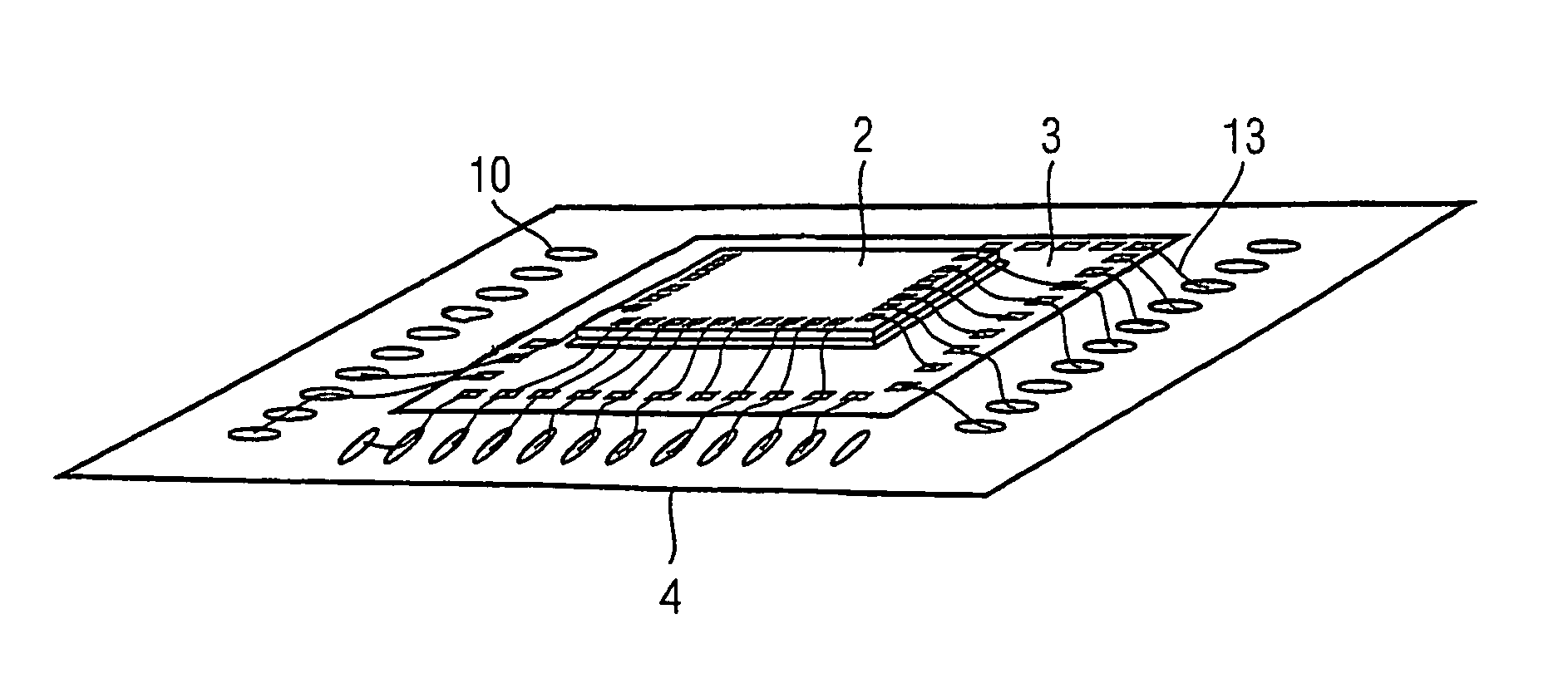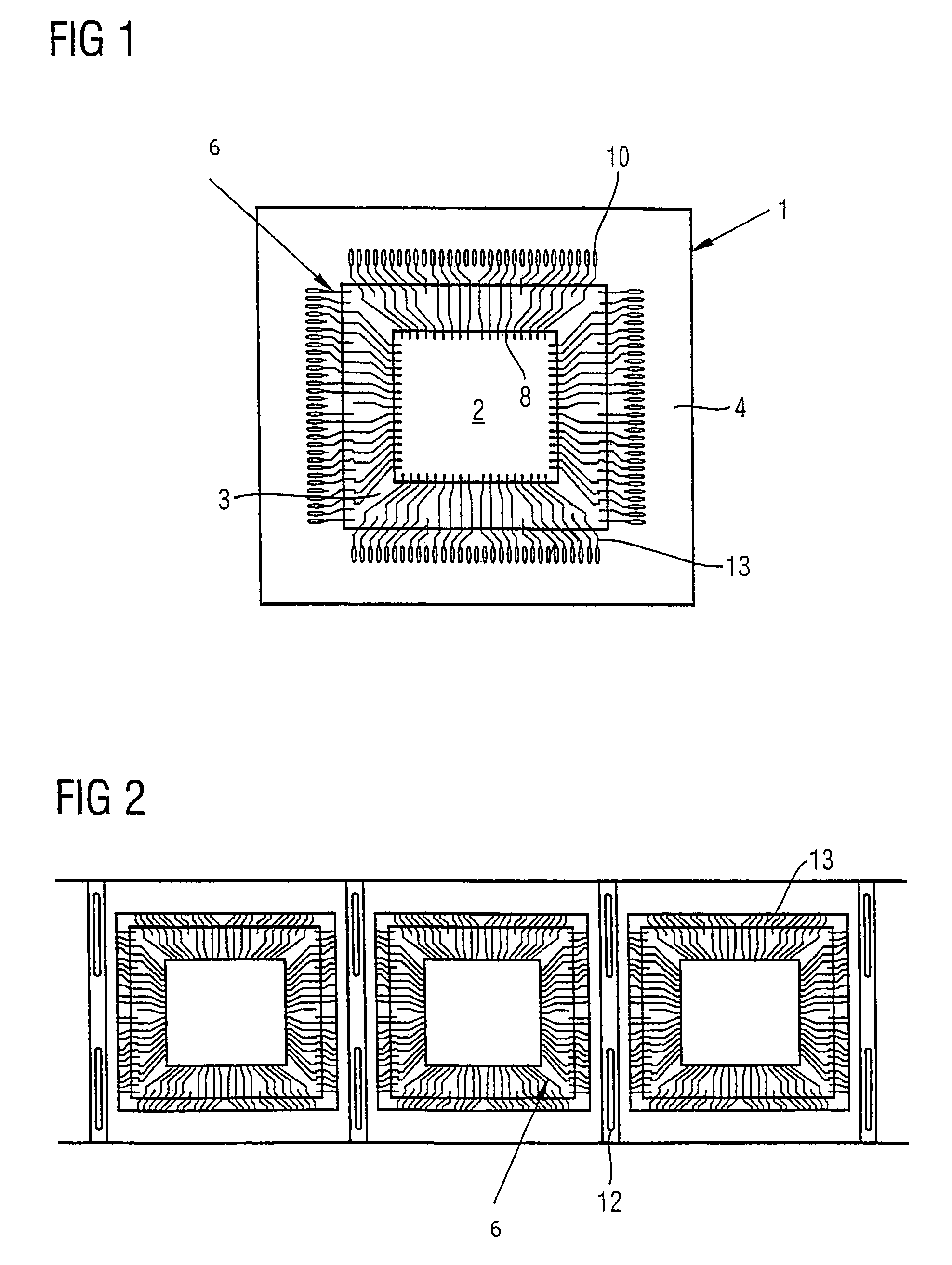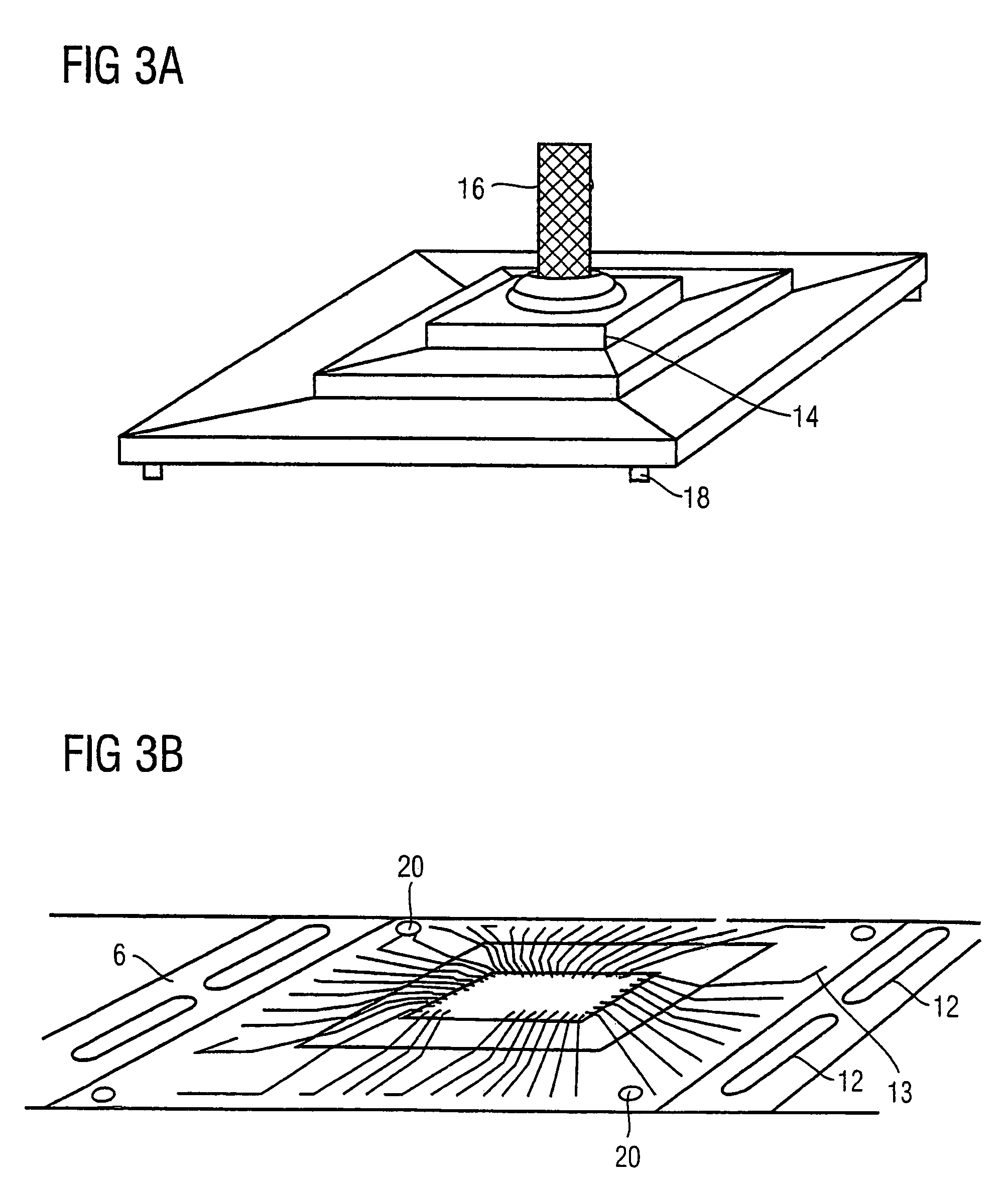Method for connecting a die assembly to a substrate in an integrated circuit and a semiconductor device comprising a die assembly
a technology of integrated circuits and die assemblies, which is applied in the direction of semiconductor devices, semiconductor/solid-state device details, electrical apparatus, etc., can solve the problems of high assembly reject rate, failed connection, wire short circuit, etc., and achieve the effect of reducing waste of materials, cost saving and time saving
- Summary
- Abstract
- Description
- Claims
- Application Information
AI Technical Summary
Benefits of technology
Problems solved by technology
Method used
Image
Examples
Embodiment Construction
[0022]FIGS. 1 and 2 show a multi-die device 1 comprising two dies 2, 3, one die being mounted on top of the other, the top die 2 having a smaller surface area than the lower die 3. The pair of dies 2, 3 are mounted as a unit on a substrate 4. A plurality of flexible strips 6 are used to electrically connect the contacts 8 on the dies 2, 3 to each other (die-to-die) and the contacts 8 on the dies 2, 3 to the bond fingers 10 on the substrate 4. The flexible strips 6 may be formed of, for example, polyimide material.
[0023]The strips 6 may be manufactured in a variety of thicknesses depending upon the specifications of the bonding pitch. The length and width can be the same as the leadframe. The length and width of the polyimide strips are designed to be the same as the lead frame, having a conductive strip width of around between 0.75 to 1 μm.
[0024]FIG. 2 shows a number of the flex strips 6. The strips 6 may have a number of location holes 12 for ease of positioning the strip 6 relativ...
PUM
| Property | Measurement | Unit |
|---|---|---|
| thickness | aaaaa | aaaaa |
| thickness | aaaaa | aaaaa |
| width | aaaaa | aaaaa |
Abstract
Description
Claims
Application Information
 Login to View More
Login to View More - R&D
- Intellectual Property
- Life Sciences
- Materials
- Tech Scout
- Unparalleled Data Quality
- Higher Quality Content
- 60% Fewer Hallucinations
Browse by: Latest US Patents, China's latest patents, Technical Efficacy Thesaurus, Application Domain, Technology Topic, Popular Technical Reports.
© 2025 PatSnap. All rights reserved.Legal|Privacy policy|Modern Slavery Act Transparency Statement|Sitemap|About US| Contact US: help@patsnap.com



